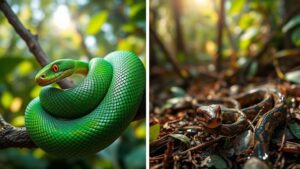Horse riding is deeply rooted in Uruguay’s culture, reflecting gaucho traditions, with a strong agricultural heritage, fertile pastures, and a temperate climate, ideal for horse breeding and equestrian activities, yet challenges persist.
Key Takeaways
- Horse riding is a cultural symbol in Uruguay.
- Uruguay has a temperate climate for horse breeding.
- Equestrian sports include turf, raid, and polo.
- Horse riding generates revenue and job opportunities.
- Uruguay offers guided horseback riding tours.
History and Cultural Significance of Horse Riding
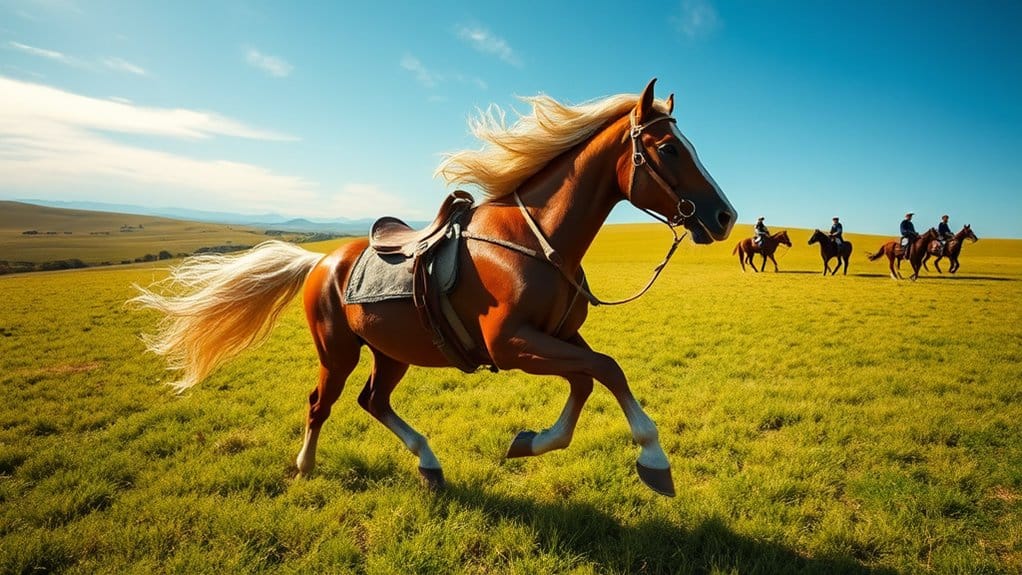
As the history of horse riding in Uruguay unfolds, it becomes clear that the introduction of horses to the country, which occurred alongside the arrival of livestock, was a critical moment in shaping the nation’s identity, with horses becoming a fundamental component of Uruguay’s agricultural production and recreational activities. Horses are deeply rooted in Uruguay’s cultural heritage, reflecting gaucho traditions and rural roots. The country’s history, cultural significance, and identity are intertwined with horse riding, symbolizing freedom and national pride, and are an integral part of Uruguay’s cultural expression, with the gaucho being an iconic figure. The fertile soils and favorable climate have contributed to Uruguay’s status as a prominent horse-breeding nation, further solidifying the importance of horses in the country’s economy and cultural landscape.
Natural Conditions for Horse Breeding
Uruguay’s unique combination of climate, land, and water conditions creates an ideal environment for horse breeding, with its temperate climate, featuring mild winters and warm summers, allowing horses to thrive, while the ample rainfall ensures lush pastures for grazing, and the balanced seasons support year-round breeding and training activities. Key factors include:
- Temperate climate
- Ample rainfall
- Balanced seasons
- Pasture management
- Breeding practices, all contributing to Uruguay’s suitability for horse breeding. The region’s favorable climate supports the growth of lush pastures, making it an attractive location for horse farms and breeding programs.
Geographic Distribution of Horses
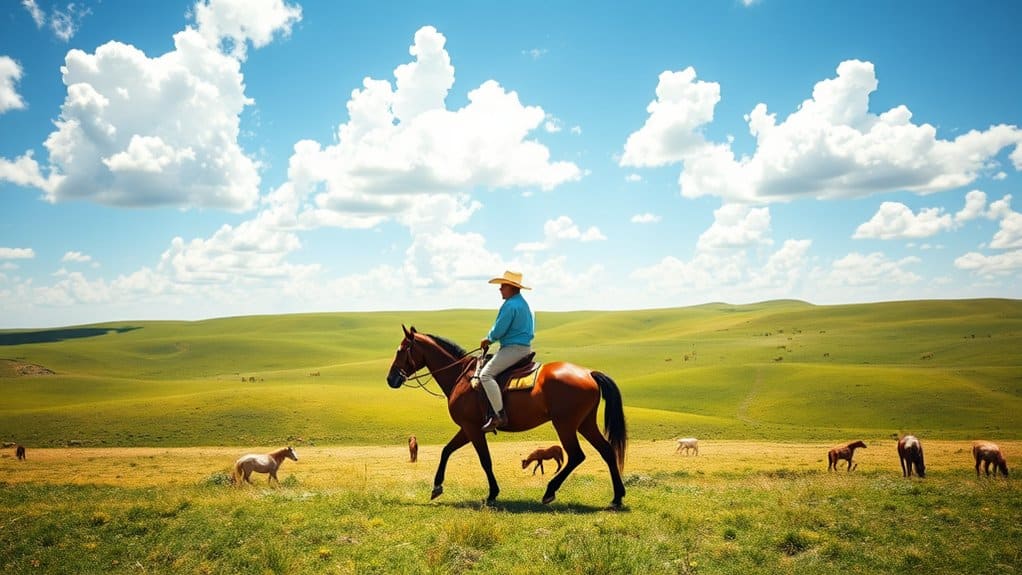
The geographic distribution of horses in Uruguay is notably concentrated in the northern regions, where terrain types, such as rolling hills and vast pastures, support agricultural activities, including meat and wool farming, which in turn, influence the presence of horses. These northern areas, with departments like Tacuarembó leading in horse population, have a significant impact on the country’s equestrian sector, supporting various activities, including breeding and farming, which are essential to local economies. The combination of suitable terrain and agricultural practices in the northern regions creates an environment that is conducive to horse breeding and riding, making these areas a vital part of Uruguay’s horse riding industry, with a high density of horses in rural areas, compared to urban centers. The horse riding experience in Uruguay, with its Criollo horses, is also marked by diverse landscapes, including beaches and wetlands, where riders can enjoy a unique experience amidst the country’s natural beauty.
Northern Regions
Horse riding in northern Uruguay is characterized by widespread distribution of horses across rural areas, including departments such as Rivera, Artigas, and Cerro Largo, where modern roads, although often supplemented by dirt tracks in more isolated areas, provide relatively easy access to these regions. Key aspects include:
- Horse care and riding techniques emphasized by locals
- Horses used for herding and farm work
- Criollo breed predominance
- Access to rural areas and natural reserves
- Opportunities for freedom and exploration through horseback riding, allowing riders to experience the open countryside. The region’s unique ecosystems support a wide variety of wildlife and vegetation, making it an ideal location for nature-loving horse riders.
Terrain Types
Numerous terrain types characterize the geographic distribution of horses in Uruguay, including coastal regions, estancia lands, interior hill country, and biosphere reserves, each presenting unique challenges and opportunities for horse riding. Riders can investigate varied trail varieties, from coastal beaches to hilly interiors, enjoying scenic vistas. With coastal regions offering beach rides, estancia lands providing grassy pastures, and biosphere reserves featuring diverse wildlife, horse riding in Uruguay promises freedom, adventure. The terrain’s diversity allows for scenic rides, cattle drives, and immersive experiences, making it an ideal destination for those seeking an unbridled connection with nature, horses, and local culture. The horse riding experience in Uruguay is further enhanced by the availability of Criollo breed horses, which provide strong and suitable mounts for the varied terrain, ensuring a safe and enjoyable ride for participants.
Equestrian Activities and Disciplines
Equestrian sports, including turf, raid, and enduro competitions, polo, and horseback riding, are prominent activities in Uruguay, offering a range of options for enthusiasts, from racing and competitive events to leisurely trail rides and treks. The country’s geographic characteristics, particularly in the northern areas, provide optimal conditions for horse breeding, which in turn supports the development of various equestrian disciplines, such as Olympic and Paralympic events, and equine therapy. With a significant number of horses and a strong equestrian culture, Uruguay provides opportunities for individuals to engage in horse riding, whether for recreational or competitive purposes, and to participate in a variety of equestrian activities, with many regions offering guided tours and horse rental services. The ranch in the Sierras of Rocha, Uruguay, offers horseback riding vacations, allowing visitors to explore unique parts of the country.
Equestrian Sports
As the country continues to solidify its position in the international equestrian scene, various disciplines have emerged, showcasing Uruguay’s diverse equestrian environment, including turf and racing, endurance riding, polo, skill tests, and equine therapy. Key aspects of equestrian sports include:
- Turf and racing
- Endurance riding
- Polo
- Skill tests
- Equine therapy, all focusing on horse durability, rider training. The annual registration of foals, such as the registered 445 foals in 2017, has contributed to the growth of equestrian activities in Uruguay. These activities demonstrate Uruguay’s commitment to equestrian excellence, fostering a culture of freedom, and competition, allowing riders to push themselves, and their horses.
Horse Riding
Several key factors make horse riding in Uruguay a unique experience, including the diverse surroundings, the variety of horses available, and the local guides who lead the tours, bringing a level of authenticity to the experience, while also highlighting the challenges of navigating this intricate equestrian environment. Trail riding is a popular activity, requiring attention to horse care. Riders traverse scenic routes, including wetlands, beaches, and forests, on horses bred for riding vacations. The experience demands determination, showcasing the country’s rugged beauty, and fostering a deep connection between horse and rider, amidst the freedom of Uruguay’s open terrains. With an emphasis on organic farming, the horses are raised to thrive in their natural environment, allowing for a more immersive experience for riders.
Statistics and Exports in the Equestrian Sector
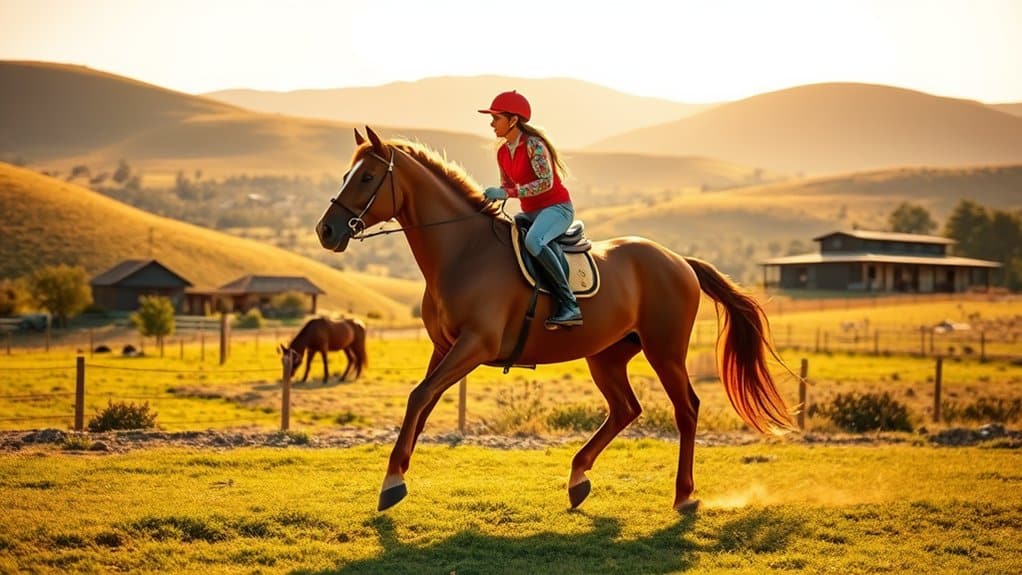
Uruguay’s position in the global equestrian sector is notable, with the country ranking 24th worldwide in terms of equine heads, and boasting a remarkable ratio of approximately one horse for every eight individuals, which places it fourth globally. Key aspects of horse demographics, export patterns include:
- High horse population in northern departments
- Main export destinations are Paraguay, UAE
- Endurance riding horses are highly exported
- Export values fluctuate over years
- Various horse breeds are exported, influencing export patterns. The data on exports is sourced from UN Comtrade, which provides detailed information on the export values of live horses from Uruguay. Uruguay’s equestrian sector is shaped by these factors, driving its unique position globally.
Economic and Labor Impact of the Equestrian Sector
Economic activities within the equestrian sector have significant implications, generating revenue, advancing tourism, and creating employment opportunities, thereby playing a vital role in the country’s local economy, particularly in rural areas, where these activities are most prevalent, and contributing to the overall economic framework. The sector fosters economic diversity, providing job opportunities for approximately 10,000 individuals, including veterinarians, teachers, and farmhands. This advances freedom and autonomy, allowing persons to pursue careers in various fields, enhancing the economy and community development, and contributing to a more stable and resilient economic environment. The growth in equestrian activities is also driven by the favorable climatic conditions, which support the expansion of the sector and its related industries, further boosting the local economy.
Popular Equestrian Tourism Destinations
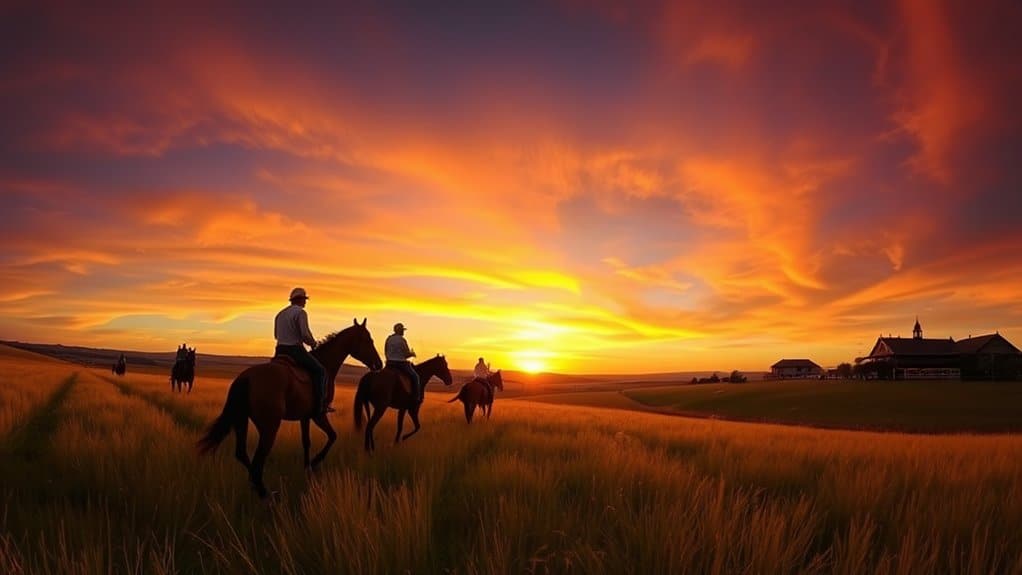
How can one truly experience the essence of Uruguay without exploring its popular equestrian tourism destinations, where the country’s natural beauty, rich culture, and passion for horses converge?
- Riding through scenic terrains
- Attending equestrian festivals
- Prioritizing horse wellness
- Exploring coastal lagoons
- Discovering local vineyards, these destinations offer freedom, with horseback riding vacations, treks, and tours, allowing riders to connect with nature. The luxury horseback riding tour in Uruguay is an ideal example, featuring an intermediate level ride through diverse landscapes along the Atlantic coast, offering a unique experience for participants.


